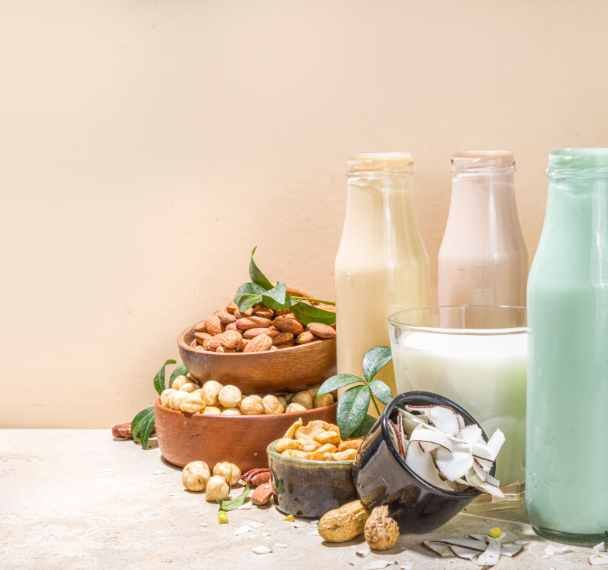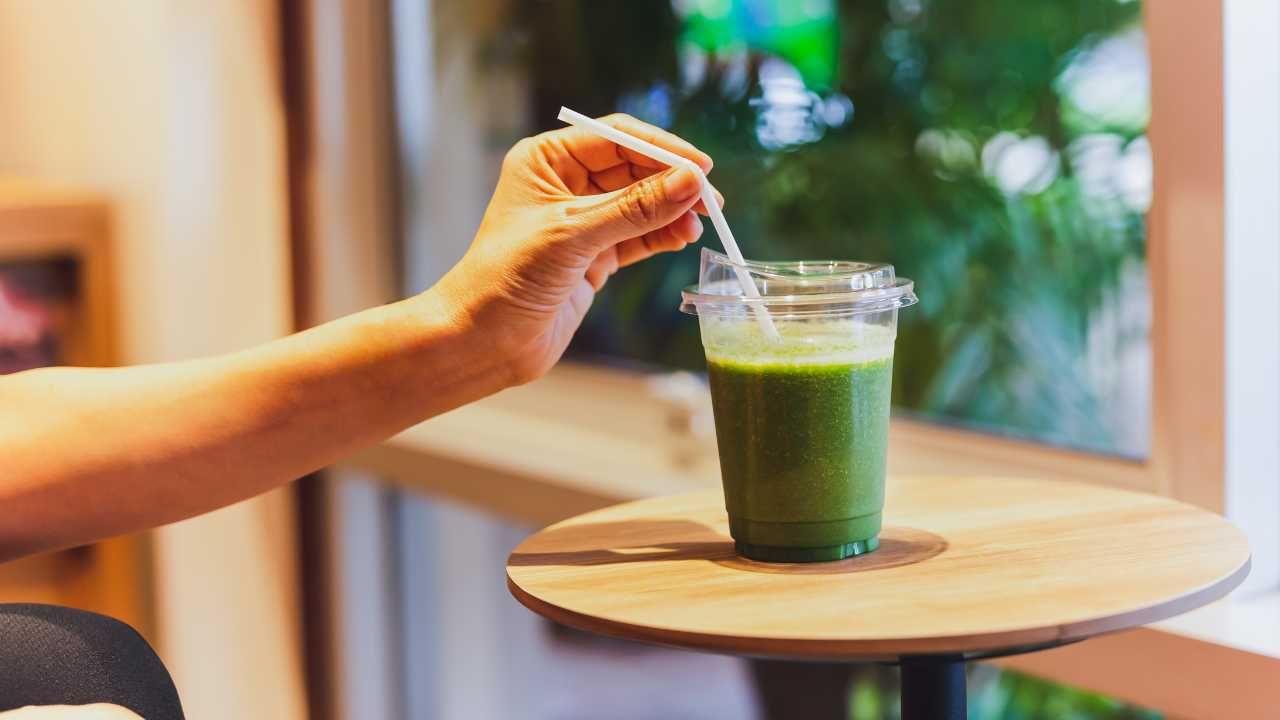Finding Harmony in Chaos: The Art and Science of Flavour Pairing
Apr 20, 2023
Introduction
Food is not just a necessity for survival, it is also a source of pleasure and enjoyment: the food we eat and the beverages we drink contribute greatly to an overall multi sensorial experience.
Flavour pairing, also called food pairing, is a technique that involves combining certain foods and drinks to complement their flavours. In recent years, it has gained popularity among chefs, foodies, and scientists alike. While the science behind flavour pairing seems promising, there are also controversies surrounding this practice.
In this blog, we will explore the science behind flavour pairing, as well as its potential benefits and how the food industry can experiment with it.
What exactly is flavour pairing?

A concise history of flavour pairing
Historically, many conventional pairings emerged from personal knowledge, experience, exposure and cultural connections which eventually became ingrained in consumers' minds.
Since the 90s, a novel approach known as flavour pairing has captivated chefs, sommeliers, mixologists, food scientists, and culinary enthusiasts. Pioneers like Heston Blumenthal, Niki Segnit, and Francois Benzi bridged the gap between science and the culinary world, allowing flavour pairing to gain a foundation in scientific reasoning.
The interest in flavour pairing has surged across various industries. Once limited to wine pairings at upscale restaurants, it now encompasses other options such as beer and food, tea or coffee with cheese or chocolate, and even more unique pairings. The world of flavour pairing continues to captivate enthusiasts everywhere.
Exploring the theory of flavour pairing
Theory suggests that when different foods or beverages share aroma compounds at the right concentration levels (high enough for us to perceive), they are more likely to pair well together. This effect is especially prominent when they share key aroma compounds.
For example, dark chocolate shares nutty and roasted characteristics with roasted peanuts and hazelnuts. These shared attributes could explain why nuts and chocolate taste so good together.
Debates on flavour pairing: unravelling the controversy
In reality, flavour pairing is more complex than it appears. It's important to remember that eating and drinking are multi-sensory experiences, involving our ability to detect aroma, texture, taste, and trigeminal sensations (e.g. pain or cooling from capsicum or menthol). These elements must harmonise together like a perfect symphony. Moreover, these experiences also evoke emotions and memories within the brain.
The flavour pairing theory has certain limitations:
🔸The theory doesn't incorporate essential research such as market, trend and product analysis, consumer perception, target consumer demographics, and cultural barriers.
🔸Determining the right pairings can be complex, as two ingredients may have numerous shared aroma compounds, both pleasant and unpleasant. Furthermore, not all food and beverages have key odorants. In some cases, a unique aroma may arise from a combination of various aroma compounds.
🔸It also doesn't address the five basic tastes (sweet, salty, umami, sour, bitter) and their role in balancing and complementing each other, nor does it consider other ingredient interactions like fat, protein, sugar, alcohol and water or the contribution of texture.
🔸When using natural flavourings, certain raw materials may be unavailable (e.g. cereal or biscuit notes), making it challenging to create the desired flavour. The success of this theory depends on the specific flavour type and what flavour houses can achieve.
Despite the popularity of flavour pairing approaches among chefs, there is a lack of scientific evidence supporting this theory.
Exploring flavour pairings through a fresh perspective
Several studies have indicated that effective flavour combinations largely rely on cognitive factors, as people learn preferences for specific foods and flavour pairings, which are often influenced by cultural elements. Moreover, various research studies have highlighted the complex process of predicting successful flavour pairings, emphasising not just the cognitive aspects, but also the sensory characteristics and the impact of language.
The intricacies of successful flavour pairing can be attributed to three pairing principles: perceptual, conceptual, and emotional:
🔸Perception principle: the combined food and drink's sensory traits, like intensity and balance.
🔸Concept principle: traditions based on cultural cooking and familiarity.
🔸Emotion principle: the 'surprise' factor differs from norms, used to make a new taste experience (could be good or bad for consumers).
Conceptual and emotional pairing principles depend on external factors related to foods and beverages, personal tastes, and past experiences stored in memory, which are connected to cognitive processes.
Therefore, a combination of foods is more likely judged a good match if it can be linked to pre-existing associations with (usual) product combinations to shape expectations about the subsequent taste experience – but additional research is needed to confirm this assumption, e.g. salted caramel, salted honey, salted chocolate.
As with anything related to flavours and aroma compounds, simplicity is rarely the case.
Exploring flavour pairing techniques

First technique: Taste memory
Traditional pairings often come from cultural and geographical connections, forming common knowledge among people. The popular method of combining flavours limits chefs and product developers to what they already know.
People remember which flavours and ingredients work well together, developed from years of cooking and eating.
However, even the best taste memory has its limits, as it only includes past experiences, not discovering new flavour combinations.
Second technique: Sensory science
It can start from a simple tasting but the more robust approach will be to use sensory science: whether working with qualitative or quantitative data, sensory science uses an experimental method and appropriate statistical analysis.
This technique include a trained sensory panel to evaluate precisely perception of foods and beverages, including aroma, flavour, aftertastes and basic tastes attributes.
Once key aroma compounds are identified and quantified, the next step is to connect the relevant data by cross-comparing dozens of ingredients and products to find similar key aroma compounds. This process can be done manually, using existing knowledge or by using software or algorithms. This method is used by some flavour houses and companies.
Third technique: Analytic
This method aims to isolate, identify, and measure even tiny amounts of various aroma compounds in ingredients or products using GC-MS (Gas Chromatography-Mass Spectrometry). Results appear as peaks on a graph.
Some GC-MS systems come with an olfactory detection port (also known as GC-O), where a trained expert can smell the gas and offer insights regarding the presence, intensity, and sensory characteristics of aroma compounds present. This method is highly beneficial for detecting key aroma compounds.
Similar to the sensory method, once key aroma compounds are identified and quantified, the next step is to connect the relevant data by cross-comparing dozens of ingredients and products to find similar key aroma compounds.
Some flavour houses and companies used a combination of both analytical and sensory methods: such as Synergy flavours and Foodpairing, pioneer of the flavour pairing theory.
Identify the perfect overlap

Once the shared aroma compounds have been detected, the main thing is now to find the right aroma compounds overlap for your project. Researchers have defined various perceptual possible outcomes when flavours are paired, including, similarity, contrast, harmony, emergence or modulation (either suppression or enhancement).
High overlap between aroma compounds:
🔸There is either one shared aroma compound in a very high concentration or a large number of shared aroma compounds.
🔸Potential Perceptual Outcomes: Similarity, harmony, modulation (suppression).
🔸The higher the synergy, the less distinguishable and impactful the flavours become.
🔸Ideal for: Product improvement without the need for distinct flavours (e.g., reformulation due to non-HFSS or cost reduction).
🔸Example: Dark chocolate combined with a dark caramel.
Medium-low overlap between aroma compounds:
🔸There is either one shared aroma compound in a low-to-medium concentration or a low-to-medium number of shared aroma compounds.
🔸Possible perceptual outcomes: similarity, contrast, harmony, emergence, modulation (enhancement).
🔸Medium-low synergy enhances the flavour attributes, allowing them to shine through.
🔸Best used for: extending flavour range or creating a new product that requires distinct flavours.
🔸Example: dark chocolate combined with a milky caramel.
Benefits of flavour pairing

The goal is not to alienate your customers but to offer something unique compared to competitors while saving time during product development.
Tip: Utilise the "classic with a twist" approach by pairing an unconventional flavour with a well-known, established flavour, e.g., chocolate and yuzu; rose and geranium.
The future of flavour pairing
The idea of combining music or soundscapes with tasting experiences has become more popular lately. Some chefs and restaurants are using ambient sounds to enhance their dishes, like the "Sound of the Sea" dish at The Fat Duck in the UK. Additionally, Stella Artois collaborated with The Roots for a unique music video in 2016, where the viewer could affect the beer's taste (from sweet to bitter) by moving their cursor.
People are not only interested in changing their perception of a food or drink's taste, but also in creating amazing experiences that exceed expectations.
Conclusion
Scientists continue to debate flavour pairing theory and search for evidence explaining why some food combinations, like strawberries and cream, work well together, while others, like red wine and seafood, don't. However, flavour pairing is an important part of the equation and should not be overlooked.
Having experimented with it myself, it's a great tool to have as part of a full flavour process when designing the best flavour and flavour profile to match your product. This includes research into consumer (e.g., culture, tradition, cognitive factors, perception), marketing, trends, and the product itself.
The idea behind flavour pairing in the food industry is to find a twist on classic flavours that will intrigue AND appeal to consumers. It opens the door to creativity and ideation, encouraging you to think outside the box and be different from the competition.
Understanding your product's base ingredients and working closely with experts can help you create the best possible flavour profiles during product development. Popular flavours like chocolate, vanilla, and strawberry may not always suit your products, especially plant-based ones. Consumer research is important, but it's essential to tailor flavours to your specific product.
So what makes a good flavour pairing?
🔸Presence of similar aroma compounds
🔸Right overlap for your product
🔸Balance of basic tastes, other ingredient interactions and texture
🔸Anthropology/culture/traditions research
🔸Cognitive link to pre-existing associations with product combinations
Link to related blogs you may enjoy
🔶The Magic of Aroma Compounds: How They Shape Our Food Experience
🔶A Journey of Flavours: How a London Food Safari Will Broaden Your Culinary Horizons
🔶Mastering Your Palate: How to Use a Flavour Lexicon
References
Previous experience includes working at a flavour house, where I witnessed the power of flavour pairing. While in the food industry, I sharpened my skills by developing and implementing a flavour pairing method in collaboration with a flavour supplier and our internal Sensory/CTI team. This approach supported our R&D product development team and proved to be successful among consumers.
Spence C., Multisensory Flavour Perception: Blending, Mixing, Fusion, and Pairing Within and Between the Senses. Foods, 2020 https://pubmed.ncbi.nlm.nih.gov/32244690/
G. van Bergen, S. Ushiama, D. Kaneko, G.B. Dijksterhuis, R.A. de Wijk, M.H. Vingerhoeds, What makes foods and flavours fit? Consumer perception of (un)usual product combinations, Food Quality and Preference, Volume 102, 2022 https://www.sciencedirect.com/science/article/pii/S0950329322001550
Wender L.P. Bredie, Mikael Agerlin Petersen, Ditte Hartvig, Michael B. Frøst, Jens Risbo and Per Møller, Flavour pairing of foods: a physical-chemical and multisensory challenge for health promotion, University of Copenhagen, Denmark, 2015 https://www.esn-network.com/index.php?id=1034
Vo Kientza, Hervé & Lavelle, Christophe, Food Pairing : is it really about science? 2021 https://www.researchgate.net/publication/351780637_Food_Pairing_is_it_really_about_science
Spence, C., Wang, Q.J. & Youssef, J. Pairing flavours and the temporal order of tasting. Flavour 6, 4, 2017. https://doi.org/10.1186/s13411-017-0053-0
Ahn, YY., Ahnert, S., Bagrow, J. et al. Flavor network and the principles of food pairing. Sci Rep 1, 196, 2011. https://doi.org/10.1038/srep00196
Peter Coucquyt, Bernard Lahousse, Johan Langenbick, The Art and Science of Foodpairing, 2020
James Briscione, Brooke Parkhurst, The Flavor Matrix: The Art and Science of Pairing Common Ingredients to Create Extraordinary Dishes, 2018
Niki Segnit, The Flavour Thesaurus, 2010








